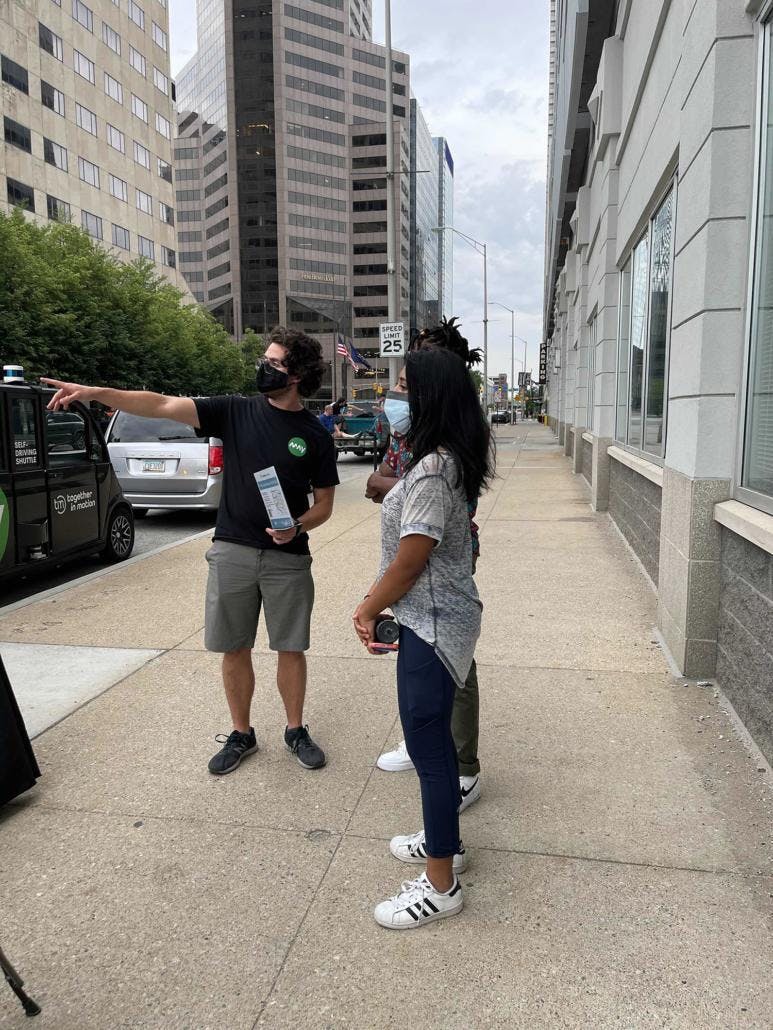May Mobility Launches Ride-Hail API, Signaling Readiness to Scale Autonomous Deployments Globally
July 10, 2025
Highly skilled professionals, known as Field Autonomy Engineers (FAEs), work in two-person teams at each new deployment to ensure the service is fully capable of meeting the community’s transportation needs.
Months ahead of any May Mobility deployment, a small, agile team of engineers begin scouting, mapping and, eventually, defining service areas and routes for each new city. These highly skilled professionals, known as Field Autonomy Engineers (FAEs), work in two-person teams at each new deployment to ensure the service is fully capable of meeting the community’s transportation needs. Key members of the team from the moment May Mobility defines a potential new deployment and throughout the entire deployment process, FAEs ensure a city’s launch is technologically and logistically feasible, making an upfront investment in time, energy and resources to identify, define and perfect each service.
The saying that you should listen to understand rather than to respond rings true for May Mobility’s onboarding phase with a new city.
“FAEs develop relationships with the customer and other stakeholders early on to really get to know them,” explains Austin Dillow, a May Mobility FAE who worked on the Arlington, TX, deployment among others. “We work closely over the course of two or three months to understand a community intimately, learning the existing pain points in a city’s transportation infrastructure, where a service is most needed and what that service should look like.”
Dialogue between the local transportation authorities and various community stakeholders is important as FAEs define which roads the service will drive on to ensure the most effective route. Using a combination of this local input and public transit data, FAEs match potential routes with the service’s capabilities.
“We work to figure out what the best combination of roads, stops and routes is for the service that May can provide the community,” said Field Engineering Manager Jay Miles.
Once a route has been roughly defined, FAEs map routes to fine tune the path. FAEs “learn by doing,” Miles says. In a manual process, FAEs go through mapping, testing, and refinement stages, driving the roads autonomously repeatedly to help ensure the autonomous technology is given the necessary inputs to operate on its own. Local conditions present unique challenges with different traffic rules and local driving quirks. For example, in some cities or states, aggressive left turns are common and expected. Likewise, in some areas pedestrians are more likely to wait for a crosswalk to turn in their favor, while in others pedestrians are likely to jump in at the first sign of an opening in traffic.
“We help our vehicle be able to infer what it needs to do and what other vehicles and pedestrians are going to do,” Miles explained. “By giving the vehicle that information, we’re able to allow the underlying behavioral algorithms to estimate not only what it needs to do to get to its next stop, but what a person in a car across an intersection is likely to do.”
Constant communication between the FAEs, the cities and other stakeholders ensures that FAEs are informing vehicles not only on current traffic patterns and data, but also anticipated changes — such as scheduled road construction or influxes in pedestrian traffic such as the return of students on college campuses.
When the route is finalized, FAEs work to help hire and train a new local team, and act as technical experts and resources to the new teams onsite. Once a deployment begins, FAEs stay onsite temporarily to ensure a smooth launch and to address any questions from the field team as well as local stakeholders. Once the transition to the local team is complete, FAEs remain in touch and work collaboratively to maintain the integrity of the geofenced operational areas, visiting sites on a regular schedule to collect data, solicit feedback and maintain strong relationships with the customer and local team.
“After a successful initial deployment, we empower the local team to take over daily operations, while also staying in touch to ensure the deployment is successful for the entire duration of its lifespan,” Miles said.

We love meeting transit agencies, cities, campuses, organizations and businesses where they are to explore how our AV solutions can solve their transportation gaps for good. Ready to partner up? Let’s talk.
We love meeting transit agencies, cities, campuses, organizations and businesses where they are to explore how our AV solutions can solve their transportation gaps for good. Ready to partner up? Let’s talk.

